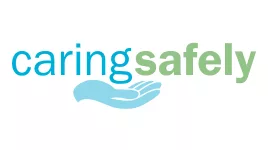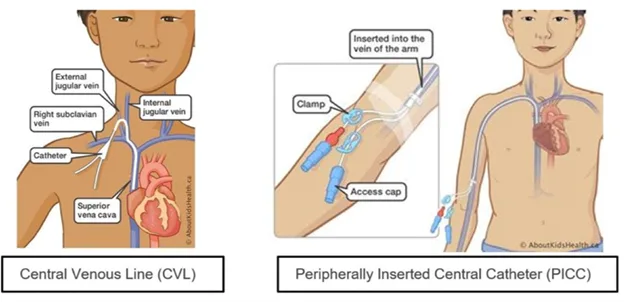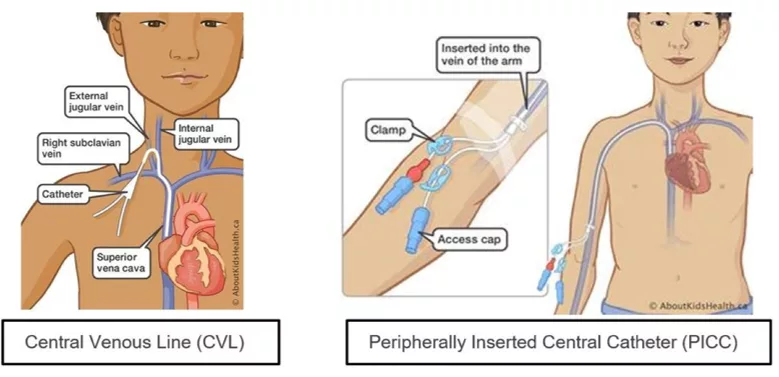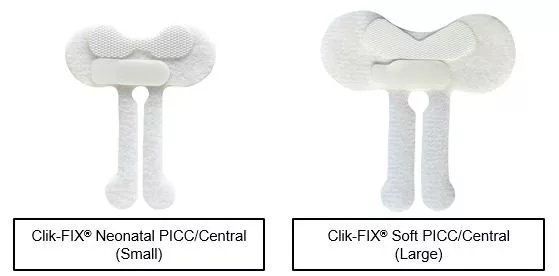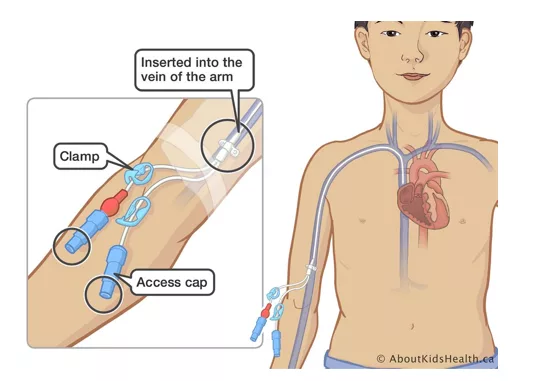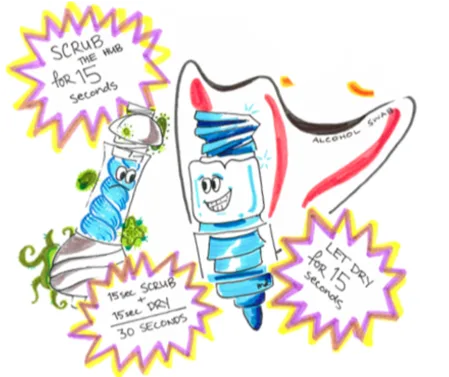SITUATION:
This QuickHit was developed in response to Connected Care virtual visits, during which home care nurses asked whether the same normal saline syringe can be used to flush both lumens of a central venous access device (CVAD) when performing a heparin lock.
BACKGROUND:
Many children with medical complexity rely on CVADs in home and community care for long-term intravenous therapy including medication administration, parenteral nutrition, dialysis, hydration, and blood sampling. Types of CVADs include central venous lines (CVL) and peripherally inserted central catheters (PICC).
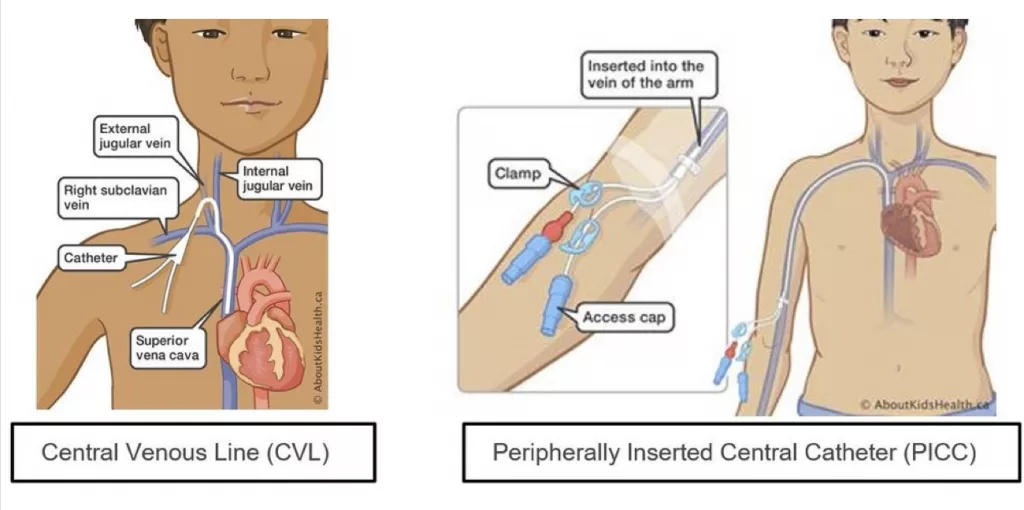
Children discharged from hospital to home with CVADs are at risk for Central Line Associated Blood Stream Infections (CLABSIs). These are serious infections that occur when microorganisms enter the blood stream either through the insertion site of the CVAD (key site) or through the access caps (key part). The image below demonstrates how bacteria can enter the bloodstream through the insertion site and/or catheter hub.
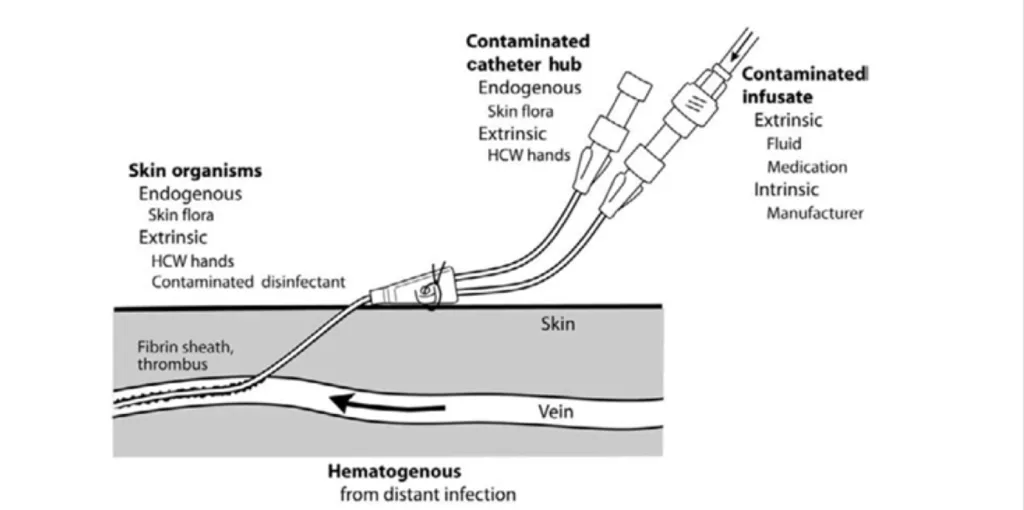
Reusing supplies when flushing or heparin locking a CVAD may increase the risk of CLABSI. Each time a flush or heparin lock is reused, it creates an opportunity for bacteria to enter the bloodstream through the catheter hub. To protect children with medical complexity who rely on CVADs at home, it is important to use sterile supplies only once to minimize risk of CLABSI.
ASSESSMENT:
The aseptic non-touch technique (ANTT) is a technique used to prevent infection when accessing CVADs and during dressing and cap changes. Using aseptic technique when flushing and heparin locking CVADs, in conjunction with using supplies only once can help prevent CLABSI.
The amount of supplies needed to flush and heparin lock a CVAD is dependent on the number of lumens. The image below outlines the typical supplies needed to flush and heparin lock a CVAD including:
- Antiseptic alcohol wipes: to clean and disinfect the hub before accessing.
- Saline flush: to flush the CVAD prior to instilling heparin. The flush volume can be found on the child’s care plan.
- Heparin vial and/or pre-filled syringe: to heparin lock based on the child’s prescribed dose.
- Safety Needle: to draw up heparin if using heparin vial and/or drawing up saline for flush or dilution of heparin lock.
- Saline vial: to draw up saline flush and/or dilute heparin lock as per child’s care plan.
- 5mL syringe: to draw up heparin lock from a multidose heparin vial.
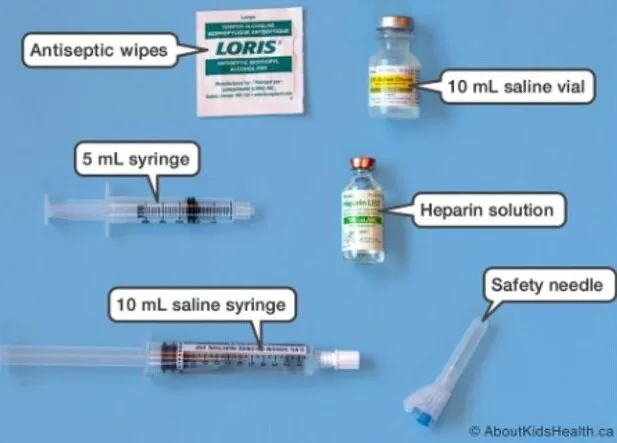
RECOMMENDATION:
Most children receiving care at home or in the community will typically have one or two CVAD lumens. Connected Care recommends the following to minimize the risk of CLABSI:
- Confirm the child’s care plan and orders for flushing and heparin locking.
- For each lumen, use a NEW alcohol swab, normal saline flush, and heparin syringe (prescribed dose).
- For one lumen, you will need:
- 1 NEW alcohol swab
- 1 NEW prefilled normal saline flush
- 1 NEW prefilled heparin syringe (prescribed dose)
- For two lumens, you will need:
- 2 NEW alcohol swabs
- 2 NEW prefilled normal saline flushes
- 2 NEW prefilled heparin syringes (prescribed dose)
- For one lumen, you will need:
- If a multi-dose vial is being used to draw up heparin, a NEW 5 ml syringe is used for each lumen. Multi-dose heparin vials are to be dedicated to a single patient, stored at room temperature and discarded 28 days from opening.
- When accessing the CVAD, maintain ANTT by scrubbing the hub for 15 seconds with an alcohol swab and allow it to air dry for 15 seconds before connecting any syringe.
- Once a syringe is used to access or heparin lock one lumen, it must be discarded. Reusing the same saline flush or heparin lock syringe on a different lumen of the same CVAD increases the risk of contamination and may lead to a CLABSI.
- Review the following article on the procedure of flushing and heparin locking a CVAD: Heparin locking the CVL or PICC.
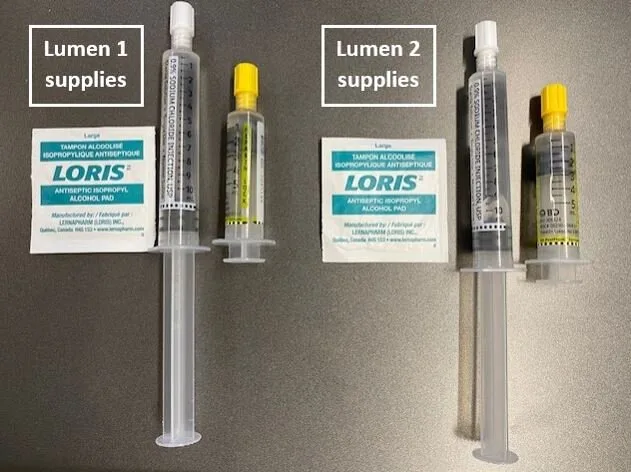
More Information
For additional information on how to heparin lock a central venous access device, visit AboutKidsHealth, or consider a Connected Care Live consult

